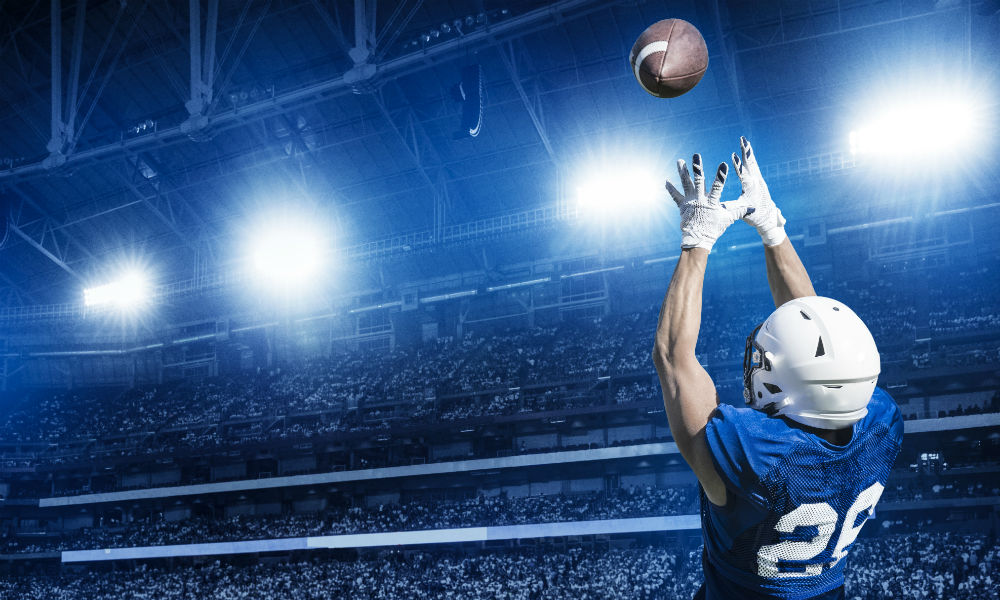
About The NFL Digital Athlete Program
In partnership with Amazon Web Services, the NFL is using artificial intelligence (AI) with the goal of improving “player health and safety” with the Digital Athlete program.
Together, the NFL and Amazon Web Services will create the Digital Athlete, described as “a virtual representation of an NFL player that can be used to better predict and eventually prevent player injury.”
The Amazon Web Service will use technology on data including speed, weather and equipment with the hope of gaining further “understanding of injuries.”
Next Gen Stats and new analytics and technology have been game-changers for the NFL over the past five years. The Digital Athlete program will hopefully offer greater long-term protection and safety to NFL players as they try to make a relatively dangerous sport even safer.
This program will be well-received by analytics-driven teams like the Detroit Lions. General manager Brad Holmes landed the position in 2021 due in large part to his deep background and knowledge in analytics.
The Lions finished 3-13-1 in what was expected to be a painful rebuilding year. Holmes and head coach Dan Campbell will continue to factor in analytics for their roster building in 2022.
In the Michigan sports betting community Detroit shares the lowest Super Bowl 2023 championship odds with the Houston Texans and New York Jets.
The Lions were hit hard by the injury bug in 2021. Without a doubt, Holmes and the Detroit front office would welcome The Digital Athlete Program in open arms.
Key players such as quarterback Jared Goff (three games missed), running back D’Andre Swift (four games missed), star tight end T.J. Hockenson (five games missed), outside linebacker Trey Flowers (10 games missed), linebacker Julian Okwara (four games missed) and young cornerback Jeff Okudah (16 games missed) were out of action for considerable time.
Even throughout his final seasons with the Lions, Matthew Stafford dealt with a plethora of injuries. He had back problems and endured an ankle sprain, a sprain in his thumb as well as rib injuries.
All 32 NFL teams deal with injuries, but for a long-struggling team like the Lions, it’s especially imperative that their young players stay healthy long-term. The highly-touted Okudah, the No. 3 selection of the 2020 NFL Draft, has been limited to 10 games through his first two seasons.
With better health and luck, the Lions should have no problem improving on their three-win total from 2021.
At the end of the day, all 32 teams would benefit greatly if the project becomes successful.
This Could Be A Game-Changer
Thanks to advancements in science, technology and data, some athletes like Tom Brady, LeBron James, Sidney Crosby and Aaron Rodgers have played at high levels even as they age.
Brady retired following his age-44 season, having led the NFL in both passing yards and passing touchdowns. His well-documented and detailed workout and diet programs allowed the seven-time Super Bowl champion Brady to fight off Father Time up until his final NFL season.
Now, just imagine how many NFL players will be able to follow Brady’s footsteps and play at a high level into their mid-40s if the Digital Athlete program comes as advertised.
Other all-time great quarterbacks like Peyton Manning (retired at 39), Ben Roethlisberger (retired at 39) and Drew Brees (retired after his age-41/42 season) dealt with several injuries that forced them to retire well before Brady’s age of 44.
Countless NFL greats have had to retire early because of mounting injuries. But a player’s prime years could last well into their late 30s or early-to-mid 40s if this technology ends up being a success.
Player Health & Safety Has Been A Central Focus For NFL
The NFL has made a plethora of rule changes over the years with the priority of further protecting its players.
Beginning in the 2011 season, kickoffs were moved up from the 35-yard line (previously a team’s 30-yard line). This was done as a way to reduce the amount of kick returns (thus cutting back on potential injuries to special teams players) while increasing the amount of touchbacks.
In the 2020 season, a whopping 61.2 percent of kickoffs ended via touchbacks, per Mile High Report. Simply put, the league’s goal of reducing the amount of kick returns has worked out nicely.
Over the past 12 or so years, the league has also focused heavily on protecting its quarterbacks. It’s so much easier for signal-callers to draw “Roughing the Passer” penalties compared to the ‘80s and ‘90s.
It’s not a popular rule, by any means. In any given season, a large portion of Roughing the Passer penalties have been met with immense criticism from pundits and fans.
But at the end of the day, the Roughing the Passer rule changes over the years have been done for the obvious reason of greatly protecting the players of the game’s most important position.
Protecting the players will always be a priority for the NFL. Here’s hoping the Digital Athlete program will be able to help enhance the long-term health and safety of its players.